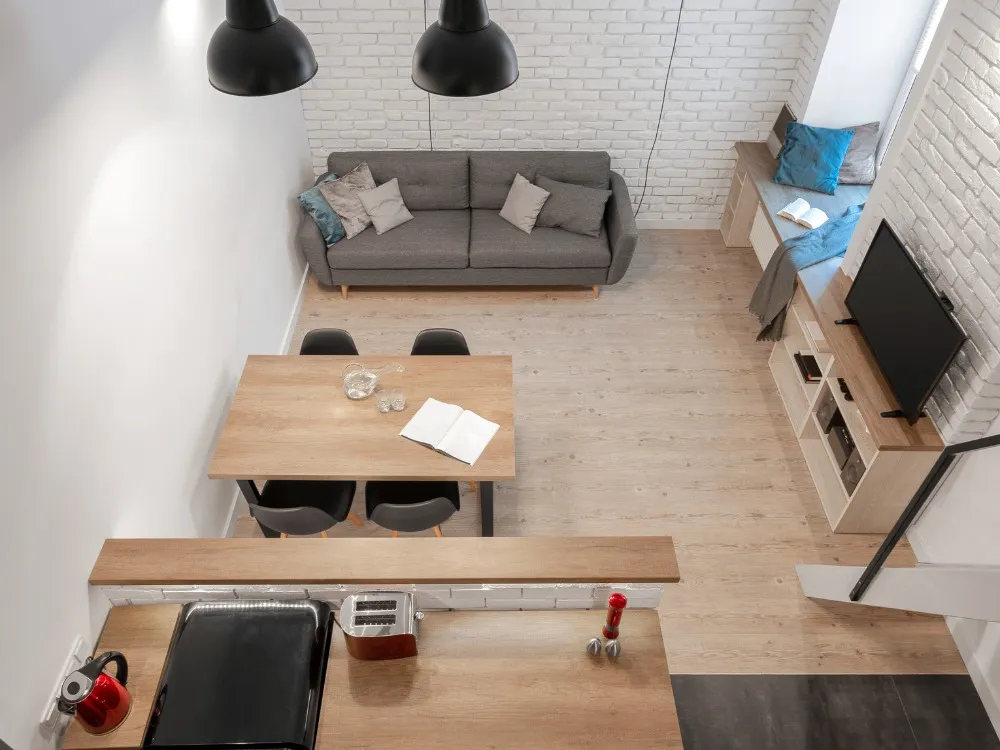HK Nano Flats: Pros, Cons, Rental and Investment Tips
Ever wondered how to own a piece of Hong Kong’s property market without spending a fortune? Enter nano flats—tiny homes that make the dream of homeownership more accessible. In a city where space is limited and property prices are sky-high, nano flats offer a glimpse of hope. But are they truly worth it? Let's explore the pros and cons, rental trends, and investment potential of Hong Kong's nano flats.
Market Overview of Nano Flats
Definition of Nano Flats
The rise of nano flats in Hong Kong stems from an acute shortage of land resources and continuously skyrocketing property prices. To meet the needs of first-time buyers and small families, the government and developers have introduced these compact residential units. Their goal is to offer a lower entry barrier into the housing market, allowing more people to own a home in the densely populated city.
Characteristics of Nano Flats
Nano flats typically feature open-plan or one-bedroom designs with usable areas ranging from 150 to 220 square feet. Despite their small size, these units are designed to maximize space, often incorporating highly integrated storage solutions, foldable beds, and wall-mounted furniture. These designs not only save space but also visually expand the small living area. Additionally, nano flats are usually located in areas with excellent transportation links, targeting urban professionals.
Market Acceptance
Although nano flats offer a lower entry cost, their living comfort and investment value are hotly debated. For some first-time buyers and young professionals, nano flats represent an affordable entry point, especially in convenient urban locations. However, from a long-term investment perspective, the capital appreciation potential and rental yield of nano flats are less certain.
Investor Perspectives
For investors, nano flats are appealing due to their lower purchase cost and potentially higher rental yields in certain areas. However, market volatility and policy changes, such as potential rent controls, could impact the feasibility of nano flats as a long-term investment.

Advantages of Nano Flats
- Lower Down Payment: Nano flats require a smaller down payment, making them more accessible for first-time buyers.
- Convenient Locations: Often situated in city centers or well-connected areas, nano flats offer easy commuting and appeal to young professionals.
- Easy Maintenance: Their small size makes cleaning and maintenance quick and straightforward, ideal for busy city dwellers.
Disadvantages of Nano Flats
- High Price Per Square Foot: Despite a lower total price, the cost per square foot is high, offering less living space for the price.
- Investment Volatility: Nano flats’ investment returns and rental yields are highly sensitive to market changes, with potential for sharp value drops during downturns.
- Living Comfort and Privacy: Limited space affects living comfort and privacy, which can be a drawback for those needing more personal space.
Analysis of Rental Returns for Nano Flats
The rental performance of nano flats in Hong Kong’s real estate market is unique, primarily influenced by their small size and specific market demand. Despite their compactness, nano flats in strategic locations often attract renters due to their convenience.
Nano Flat Case Studies:
Property in North Point, Fu Luen Building
- Unit Size: 225 square feet
- Purchase Price and Time: Purchased in 2018 for 4.05 million HKD
- Current Rent: 12,000 HKD per month
- Rental Yield: Approximately 5%
- Price Fluctuation: Original owner sold the unit after more than five years for 2.85 million HKD, losing 1.2 million HKD, illustrating the significant value fluctuations in unstable market conditions.
Property in Cheung Sha Wan, The Amused
- Unit Size: 220 square feet
- Transaction Price and Time: Purchased in 2019 for 5.135 million HKD, sold in 2023 for 3.88 million HKD
- Price per Square Foot: Approximately 17,636 HKD
- Rental Levels: Despite a general market decline, some nano flats maintained their rental value. For instance, the price per square foot around Fu Luen Building rose from 60 HKD to 70-80 HKD, while luxury areas like Mid-Levels West remained at 40-50 HKD.
Rental Yield
Nano flats can offer high rental yields, but their value is highly sensitive to market fluctuations. For example, during economic downturns, nano flats in North Point saw significant value drops, though short-term rental returns remained attractive. Conversely, even during downturns, nano flats in well-connected areas maintained higher rental levels, showcasing their potential as long-term investments. This trend is mainly due to their relatively low rents, which appeal to many working individuals seeking affordable housing.
Property Investment Returns
While nano flats provide high rental returns per square foot, investors must carefully assess market volatility and rental stability. High rental yields might be offset by property price drops. For instance, some nano flats may initially offer high rental returns, but as market supply increases, future rental income could decrease.
Long-term Sustainability
Understanding the long-term sustainability of rental returns is crucial for nano flat investors. Short-term rental increases might occur due to new developments or specific demand, but evaluating whether this is a long-term trend is essential. Market changes, demographic shifts, and government policies could all impact the rental performance of nano flats.
LetsGetHome: Hong Kong's Commission-Free Rental Platform
In Hong Kong’s tight housing market, nano flats present unique living and investment opportunities. When investing in nano flats, it's crucial to evaluate factors like location, market volatility, and rental yield potential. Additionally, consider rental stability and the risk of capital loss.
If you're seeking commission-free rental housing in Hong Kong, LetsGetHome is your trusted partner. Our platform allows landlords and tenants to list and find rentals for free, or to access on-demand rental services with the lowest commission costs in Hong Kong.



